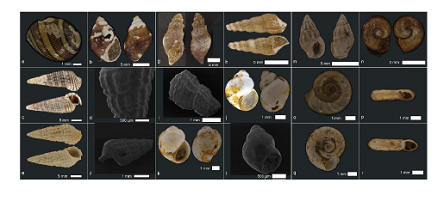


Indian Journal of Science and Technology
Year: 2022, Volume: 15, Issue: 26, Pages: 1274-1284
Original Article
Sven Sindern1*, Linda Taft2, Muthuvel Arumugam3, Piero Bellanova4, Nina Engels4, Luisa Bellanova5
1Institute of Applied Mineralogy and Economic Geology, RWTH Aachen University, Wüllnerstrasse 2, 52062, Aachen, Germany
2Department of Geography, University of Bonn, Meckenheimer Allee 166, 53115, Bonn, Germany
3Faculty of Marine Sciences, Centre of Advanced Study in Marine Biology, Annamalai University, Parangipettai - 608502
4Institute for Neotectonics and Natural Hazards, RWTH Aachen University, Lochnerstrasse 4- 20, 52064, Aachen, Germany
5Institute for Geology and Geochemistry of Petroleum and Coal, RWTH Aachen University, Lochnerstrasse 420, 52064, Aachen, Germany
*Corresponding Author
Email: [email protected]
Received Date:11 January 2022, Accepted Date:23 March 2022, Published Date:11 July 2022
Objectives: The distribution of aquatic gastropod shells was investigated in riverine and coastal sediments of Chennai, India. Next to taxonomic identification, the shell preservation was characterized and quantified with a taphonomic grade. Methods: Sediments of the Adyar and Cooum rivers as well as of coastal backwaters of the metropolitan area were taken down to a maximum depth of 81 cm using a handheld geoslicer and inspected by optical and electron microscopy. Taphonomic features (i.e. exfoliation, external luster, cracking, fragmentation, edge preservation, bioerosion, encrustation) reflecting different destructive post-mortem processes were observed, individually ranked and averaged in a composite taphonomic grade for each specimen. Results: Shells and shell fragments of various families occur with markedly different abundances between 63.7 and < 1% (in decreasing order Potamididae, Bithyniidae, Stenothyridae, Planorbidae, Thiaridae, Bullinidae, Nassariidae, Neritidae, Paludomidae). Their distribution invokes salinity as a major factor controlling occurrence in a habitat. The lack of larger and globose shells in freshwater river sediments may reflect the preference of stagnant water habitats and limited preservation in sedimentary transport. The predominance of Pirenella cingulata among the shells found in sediments of brackish environments probably reflects mechanical robustness and its extreme abundance in tidal flats. Due to post-mortem destruction most shells are incomplete. Roughly 25% of all specimens are almost complete shells not only showing spire and body whorl but at least in part also apex and/or aperture and outer lip. More than 50% represent spires or combinations of apex and spire. Composite taphonomic grades for gastropod families show a large range and reach high values. The lowest grades, indicative of best preservation, are observed for Stenothyra blanfordiana and Bithynia sp. Novelty: The distribution of gastropods in riverine and coastal environments represents a valuable ecosystem characteristic. Shell preservation shown here for sediments of Chennai is the basis for retrospective environmental characterization.
Keywords: Gastropods; shells; river sediments; taphonomy; Chennai
© 2022 Sindern et al. This is an open-access article distributed under the terms of the Creative Commons Attribution License, which permits unrestricted use, distribution, and reproduction in any medium, provided the original author and source are credited.
Published By Indian Society for Education and Environment (iSee)
Subscribe now for latest articles and news.